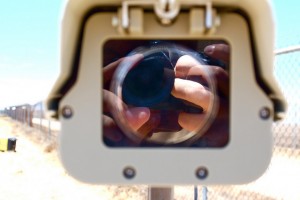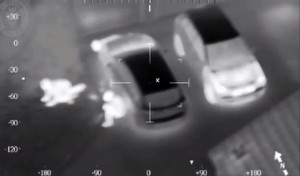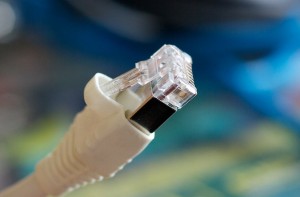When it comes to surveillance cameras, visibility is key. Some of the obstacles surrounding a camera’s capability to retain high video quality such as lighting, camera installation, and type of camera are somewhat within our control, others are not. Uncontrollable issues of extreme brightness, like light produced from headlights and the sun, or extreme darkness are not necessarily easily overcome. However, as with anything, technological progression helps change these harrowing limitations. As industry professionals our team at Perfect Connections, Inc. has been providing security system solutions, including surveillance, to organizations throughout northern and central New Jersey for over 25 years. We’ve seen the impact changing technology has on the equipment we install and how it can be beneficial to our customers.
Surveillance systems are in the midst of a transition from using conventional analog equipment to IP (Internet Protocol). Why? For one, image quality. The tricky thing with IP cameras is not all are created equal. There isn’t necessarily a defined industry standard that is accepted by all integrators and camera manufacturers when it comes to “best” image quality. For example some might argue that the higher the megapixel count the better, but it doesn’t necessarily guarantee a better image. At least with HD (high definition) cameras there are standards manufacturers must comply with in order to be considered HD.
Aside from pixel count, an IP camera’s display threshold in extreme conditions is critical, but limited. This limit, specifically when referring to extreme brightness or darkness, is typically known as “dynamic range.” Wide dynamic range (WDR), “allows cameras to capture much more detail in scenes where there are varying levels of light, much like the way the human eye ‘processes’ these types of scenes.” You know the feeling of widening your eyes in the dark to try to see clearer because you’re eyes haven’t quite adjusted yet? It’s sort of the same idea with WDR cameras and how they adapt in both light and dark conditions. However, their adjustments aren’t a physical strain and transitions are typically quicker than ours.
 The images above show the difference between a parking garage being monitored by a camera with no WDR or WDR turned off on the left, and on the right the same area monitored by a camera with WDR enabled. The difference is clear as day. Why do they differ so much? The camera with the WDR enabled has two internal Charge-Coupled Devices (CCD). The two devices, or sensors, scan an image at different speeds, one low and one high, the image processor then combines the separate images producing a clearer, more balanced picture with better contrast and lighting. This process happens quickly enough to produce a stream of clear recorded footage. There are many different manufacturers that produce these WDR cameras in the market today, and not all of them use the same type of sensor and image processing combinations. The best way to ensure you are getting the best camera for your specific application is to hire a licensed security systems integrator who is educated in which camera specifications will work best in variant conditions.
The images above show the difference between a parking garage being monitored by a camera with no WDR or WDR turned off on the left, and on the right the same area monitored by a camera with WDR enabled. The difference is clear as day. Why do they differ so much? The camera with the WDR enabled has two internal Charge-Coupled Devices (CCD). The two devices, or sensors, scan an image at different speeds, one low and one high, the image processor then combines the separate images producing a clearer, more balanced picture with better contrast and lighting. This process happens quickly enough to produce a stream of clear recorded footage. There are many different manufacturers that produce these WDR cameras in the market today, and not all of them use the same type of sensor and image processing combinations. The best way to ensure you are getting the best camera for your specific application is to hire a licensed security systems integrator who is educated in which camera specifications will work best in variant conditions.
WDR technology, like anything else, is not perfect. Depending on the camera manufacturer, you could end up with a camera that takes up to 15 seconds to adjust with varying light levels. That doesn’t sound like that long, but it could mean the difference between catching a perpetrator and them getting away. Another issue you might run into are cameras that don’t have the ability to turn WDR settings on and off automatically. Without the automation the transition becomes the responsibility of someone on site, which can be time consuming and ineffective in a time sensitive situation. This is why it is vital to consult a professional security systems integrator who is educated in the differences between product specifications and their appropriate applications.
The clarity of recorded video footage is crucial to the security of any organization. As a business owner you don’t want to be left wondering why your recordings are grainy, washed out, or so dark they become unusable. No one can control the external factors that affect an organization, but you can be prepared for them by taking the proper precautions. Licensed system integrators are there to help. Our team at Perfect Connections, Inc. has been providing comprehensive security system solutions to businesses throughout northern and central New Jersey since 1992. We recognize the importance of utilizing quality security products that not only perform well but perform to their intended specifications.
If you live or run a business in Central or Northern New Jersey and would like information on any of the topics discussed above, please call 800-369-3962 or simply CLICK HERE.
Image Credit: Image by IQinVision-Google-Creative Commons
 When it comes to security systems you may have heard the term “edge technology,” “edge analytics,” or “edge devices.” What exactly do these terms mean and why are they important? When talking about security systems “the edge” is typically used when referring to video surveillance components. Every security system integrator and industry professional will likely have their own definition of what it means, but in summary “edge technology” refers to surveillance devices that operate, analyze, and record at their source versus transmitting all that information over a network to the system’s core. In traditional surveillance systems there is a central server where recorded data from peripheral devices is stored and analyzed. In an edge-based system cameras perform these functions locally.
When it comes to security systems you may have heard the term “edge technology,” “edge analytics,” or “edge devices.” What exactly do these terms mean and why are they important? When talking about security systems “the edge” is typically used when referring to video surveillance components. Every security system integrator and industry professional will likely have their own definition of what it means, but in summary “edge technology” refers to surveillance devices that operate, analyze, and record at their source versus transmitting all that information over a network to the system’s core. In traditional surveillance systems there is a central server where recorded data from peripheral devices is stored and analyzed. In an edge-based system cameras perform these functions locally. Not all surveillance cameras are created equally. It may seem as simple as selecting a surveillance camera and popping it into place, but what about the external factors that affect the quality of recorded images? One of the top concerns for industry professionals and end-users alike is a cameras ability to see in the dark or varied light conditions. Whether you’re using interior or external cameras, their ability to function under varied light conditions is paramount. Our experts at
Not all surveillance cameras are created equally. It may seem as simple as selecting a surveillance camera and popping it into place, but what about the external factors that affect the quality of recorded images? One of the top concerns for industry professionals and end-users alike is a cameras ability to see in the dark or varied light conditions. Whether you’re using interior or external cameras, their ability to function under varied light conditions is paramount. Our experts at  Our world is constantly changing and evolving. Progression is an inevitable force that influences the way we live our daily lives. This is especially true of advancements made in the techy devices we interact with on a daily basis. Everything from our smartphones to our security systems. It’s the manner in how we interact with all of these devices that is driving innovation and product design. The internet and networking of devices is creating a connected environment that offers ultimate convenience and changes how we perceive the potential of security systems.
Our world is constantly changing and evolving. Progression is an inevitable force that influences the way we live our daily lives. This is especially true of advancements made in the techy devices we interact with on a daily basis. Everything from our smartphones to our security systems. It’s the manner in how we interact with all of these devices that is driving innovation and product design. The internet and networking of devices is creating a connected environment that offers ultimate convenience and changes how we perceive the potential of security systems.